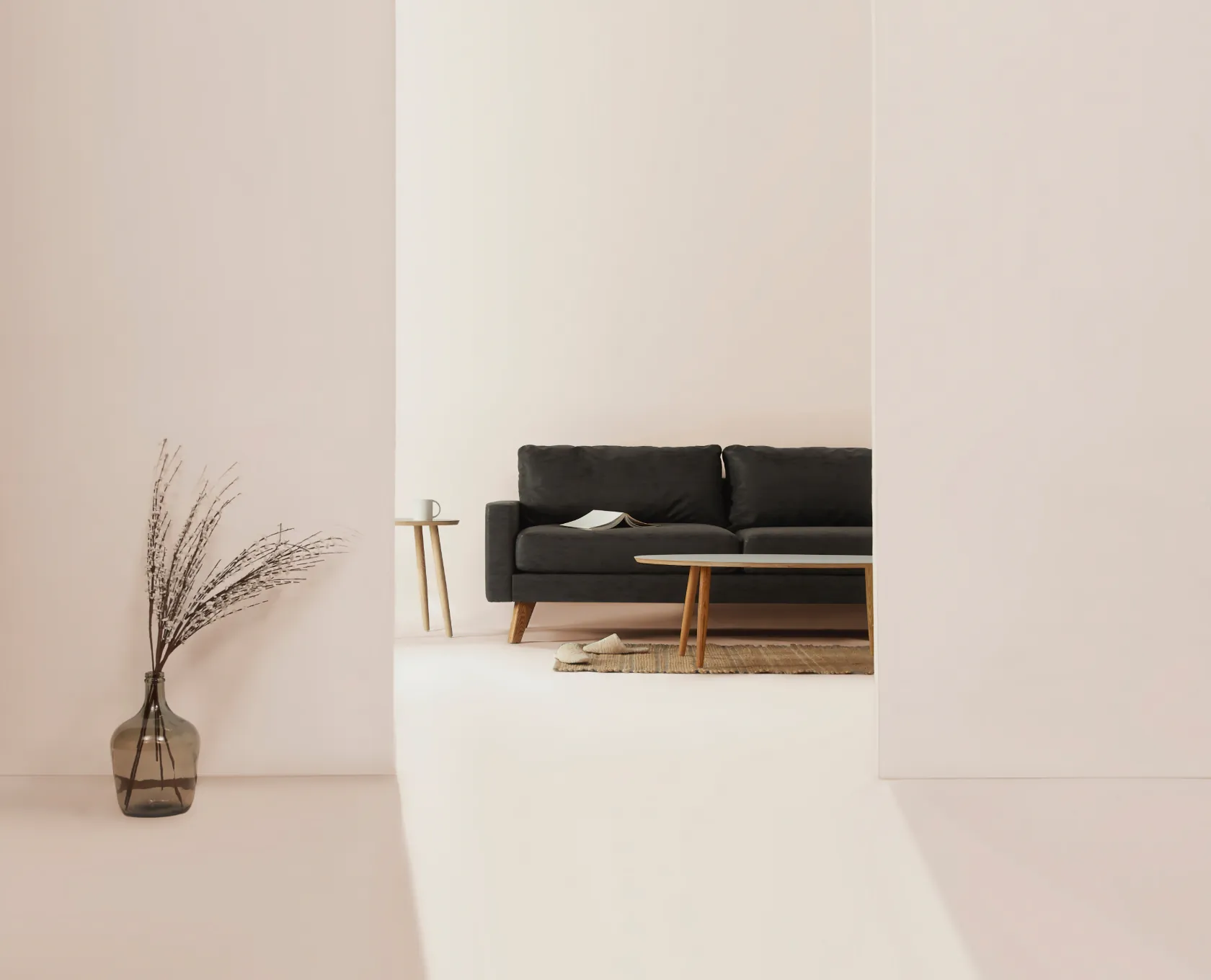- 272 Bath Street, Glasgow, United Kingdom, G2 4JR
Embracing Harmony: Exploring the Principles of Japandi Interior Design

Finding Balance: Understanding the Fusion of Japanese and Scandinavian Styles
In the realm of interior design, the amalgamation of Japanese and Scandinavian styles has given birth to a unique and harmonious aesthetic known as Japandi. At its core, Japandi design seeks to strike a delicate balance between the minimalist elegance of Japanese aesthetics and the cozy warmth of Scandinavian interiors. This fusion is not merely a juxtaposition of two contrasting styles but rather a thoughtful integration that celebrates the best of both worlds. By understanding the underlying principles of both Japanese and Scandinavian design philosophies, one can unravel the essence of Japandi and appreciate its timeless appeal.
Japanese design principles emphasize simplicity, functionality, and a deep reverence for nature. Spaces are characterized by clean lines, uncluttered layouts, and a restrained color palette inspired by the natural world. In contrast, Scandinavian design places a strong emphasis on comfort, hygge, and the use of natural materials such as wood and textiles. The fusion of these two styles in Japandi design results in interiors that exude a sense of calm sophistication while also offering a cozy retreat from the hustle and bustle of modern life.
At the heart of Japandi design lies the concept of balance – a delicate equilibrium between form and function, minimalism and warmth, tranquility and comfort. Achieving this balance requires a thoughtful curation of elements that honor the essence of both Japanese and Scandinavian aesthetics. From furniture selection to color schemes to the incorporation of natural elements, every aspect of Japandi design is carefully orchestrated to create spaces that are not only visually pleasing but also conducive to well-being and serenity.
Serenity in Simplicity: Unveiling the Core Tenets of Japandi Design
Japandi design embodies a serene and tranquil atmosphere through its commitment to simplicity and minimalism. At its essence, Japandi seeks to create spaces that are uncluttered, balanced, and imbued with a sense of harmony. This aesthetic celebrates the beauty of understatement, opting for clean lines, functional furniture, and a muted color palette to evoke a feeling of calmness and serenity. By understanding the core tenets of Japandi design, one can unlock the secrets to crafting interiors that are both visually stunning and emotionally enriching.
Central to Japandi design is the concept of simplicity – a philosophy that prioritizes clarity, order, and purposefulness in every design decision. Spaces are stripped down to their essential elements, free from unnecessary embellishments or distractions. This emphasis on simplicity not only enhances visual appeal but also promotes a sense of clarity and focus in the living environment. Through thoughtful editing and restraint, Japandi interiors exude a sense of calm sophistication that resonates with the modern-day desire for peace and tranquility amidst the chaos of everyday life.
In addition to simplicity, Japandi design embraces the principles of balance and harmony. Each element within the space is carefully curated to create a cohesive whole, where every piece serves a specific function while contributing to the overall aesthetic harmony. This emphasis on balance extends to the interplay of textures, materials, and colors, creating visual interest and depth without overwhelming the senses. By striking the perfect equilibrium between simplicity and sophistication, Japandi design offers a timeless and enduring aesthetic that fosters a sense of serenity and well-being in the home.
Nature’s Influence: Integrating Organic Elements into Japandi Interiors
In the realm of Japandi design, the natural world serves as a profound source of inspiration, guiding the integration of organic elements into interior spaces. This design philosophy embraces the innate beauty of nature, seeking to create environments that evoke a sense of connection with the outdoors. From the use of sustainable materials to the incorporation of biophilic elements, integrating nature into Japandi interiors not only enhances visual appeal but also fosters a deeper sense of well-being and tranquility.
Central to the integration of organic elements in Japandi design is the use of natural materials such as wood, stone, and bamboo. These materials not only add warmth and texture to the space but also evoke a sense of authenticity and craftsmanship. Whether it’s hardwood flooring, reclaimed timber furniture, or stone countertops, the presence of natural materials brings a touch of the outdoors into the home, creating a harmonious and inviting atmosphere.
In addition to natural materials, Japandi design also embraces biophilic elements that blur the boundaries between indoor and outdoor spaces. From large windows that flood the interiors with natural light to indoor plants that purify the air and create a sense of vitality, biophilic design principles are integral to fostering a deeper connection with nature. By incorporating elements such as greenery, water features, and natural textures, Japandi interiors not only celebrate the beauty of the natural world but also promote a sense of serenity and well-being in the home.
Elegance in Minimalism: Embracing Clean Lines and Functional Spaces
Japandi design epitomizes elegance through its embrace of minimalism, characterized by clean lines and functional spaces. At its core, Japandi celebrates the beauty of simplicity, eschewing unnecessary ornamentation in favor of a refined aesthetic that exudes sophistication and tranquility. By embracing clean lines and prioritizing functionality, Japandi interiors achieve a sense of understated elegance that resonates with modern sensibilities.
Central to the concept of elegance in minimalism is the emphasis on clean lines and uncluttered spaces. Japandi interiors are characterized by streamlined furniture, geometric shapes, and an absence of decorative excess. This pared-back approach creates a sense of visual clarity and order, allowing each element within the space to stand out and make a statement on its own. By eliminating superfluous adornments, Japandi design fosters a sense of calmness and serenity, creating environments that are conducive to relaxation and introspection.
In addition to clean lines, Japandi design prioritizes functionality, ensuring that every aspect of the space serves a practical purpose. Furniture is selected for its versatility and efficiency, with an emphasis on multifunctional pieces that maximize space and utility. Storage solutions are integrated seamlessly into the design, minimizing clutter and maintaining a sense of openness. By prioritizing functionality alongside aesthetics, Japandi interiors strike the perfect balance between form and function, achieving a timeless elegance that transcends fleeting trends.
The Beauty of Imperfection: Exploring Wabi-Sabi in Japandi Interior Design
In Japandi interior design, the concept of wabi-sabi offers a profound perspective on the beauty of imperfection and the appreciation of the transient nature of existence. Wabi-sabi, rooted in Japanese aesthetics, celebrates the authenticity of natural materials, the passage of time, and the inherent imperfections that give objects and spaces their unique character. Within the context of Japandi design, wabi-sabi serves as a guiding principle, imbuing interiors with a sense of warmth, depth, and authenticity.
At the heart of wabi-sabi is the notion of embracing imperfection and impermanence. In Japandi interiors, this manifests through the use of weathered wood, handcrafted ceramics, and textured surfaces that bear the marks of time and use. Rather than concealing flaws or striving for flawless perfection, Japandi design celebrates the beauty of aged materials and the patina of everyday life. These imperfections add layers of richness and complexity to the space, creating a sense of history and narrative that enriches the lived experience within.
Moreover, wabi-sabi in Japandi design encourages a deep connection with the natural world and an appreciation for the transient beauty of seasonal changes. This is reflected in the choice of materials inspired by nature, such as rough-hewn stone, rustic wood, and organic textiles. By incorporating elements of the natural world into the interior, Japandi spaces evoke a sense of harmony and balance that resonates with the rhythms of the earth. In embracing wabi-sabi, Japandi design offers a profound meditation on the beauty of imperfection and the fleeting nature of life, inviting inhabitants to find joy and solace in the authenticity of their surroundings.

